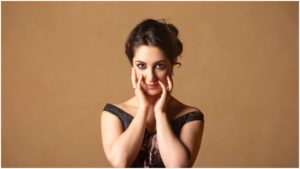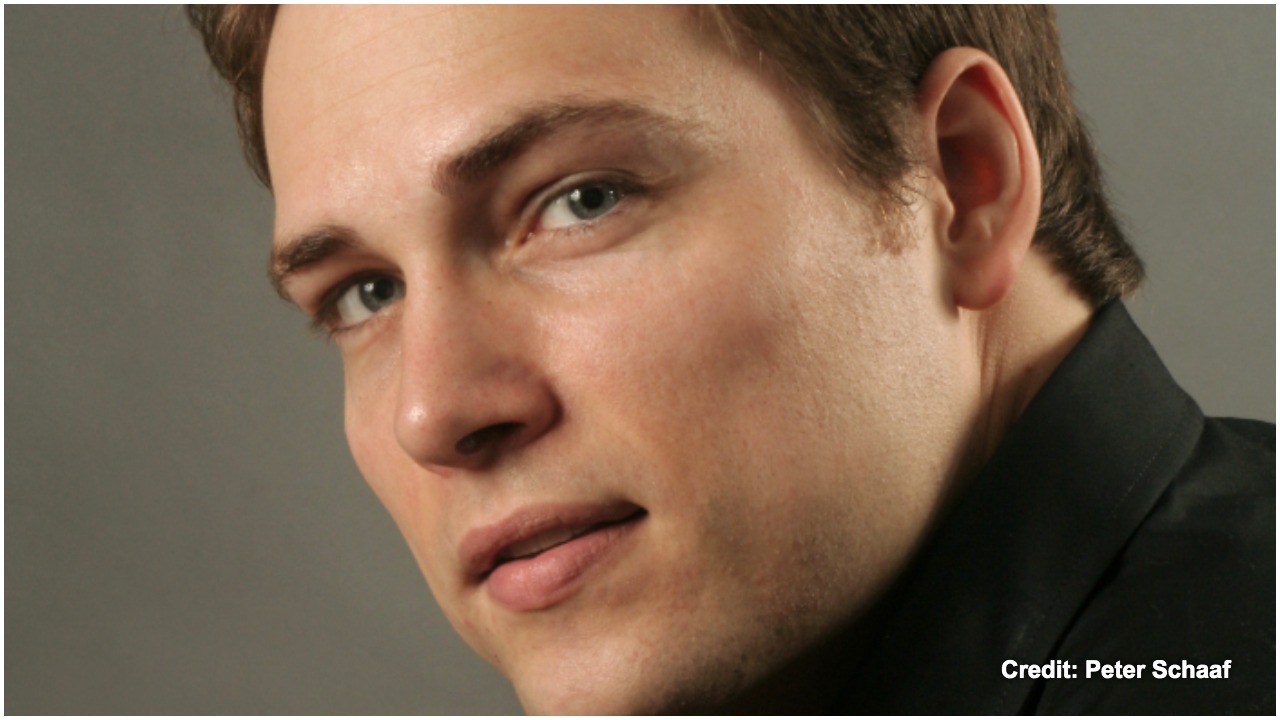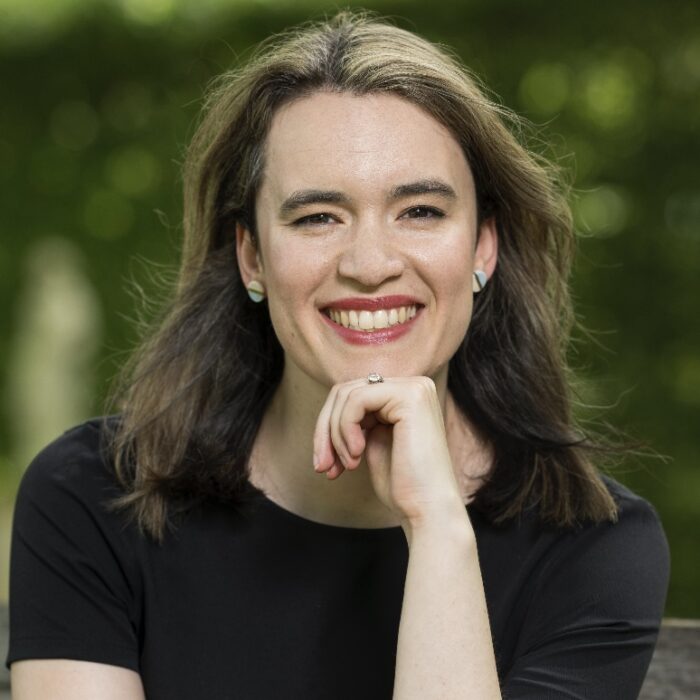
Q & A: Francesca Aspromonte On Her New CD & Her New Role As Professor of Baroque Singing
By Alan Neilson(Photo: Nicola Dal Maso, RibaltaLuce Studio)
Back in 2018 OperaWire interviewed Italian soprano and baroque specialist Francesca Aspromonte to talk to her about her newly released CD “Maria & Maddalena,” her love for the baroque repertoire and her desire to expand her repertoire into other areas.
Since then she has gone on to cement her reputation with a string of successful performances at prestigious early music venues across Europe, including Drottningholms Slottsteater, Opéra Royal de Versailles and Innsbruck’s Early Music Festival. Now she is about to release her second solo CD “Maria & Maddalena,” and has just made her role debut as Marzelline in Beethoven’s “Fidelio” at Florence’s Maggio Musicale.
So OperaWire thought it was a good time to catch up with her, to talk about the new CD, her career developments and to find out what else has been happening, as well as her plans for the future.
OperaWire: You have just released a new CD called “Maria & Maddalena” in which you consider the roles of the Virgin Mary and Mary Magdalene through a series of arias taken from baroque oratorios written mainly in the very early 18th century. How did you come up with this idea?
Francesca Aspromonte: I remember the exact moment. I was walking in Bologna with my husband searching for an apartment, and we were discussing possibilities for our next recordings. I wanted to record some sacred music, but it wasn’t easy to decide on what characters to sing. Obviously, there is the Virgin Mary, but there are so many CDs with crying holy Marys that it would just become another one of many. I then had the idea of Mary Magdalena. It was like a light had been turned on inside my head. There are many oratorios in which she appears, and this led to the idea of making a disk in which I could present arias sung by both characters. There is the Virgin who from the beginning knows that she will suffer the pain of watching her son die, and then there is Mary Magdalene who from initial doubts, eventually gives up everything to follow Christ. I created half the programme almost immediately there, on the spot.
OW: How did you select the arias?
FA: Most of the pieces I had already sung in performance, and knew they would fit perfectly. I particularly love Pasquini’s “La Sete di Cristo” which contains arias which would have been perfect, but I have already recorded it, and I wanted to record something different. So, I asked Francesco Lora, a specialist of 18th century oratorios, for suggestions, and he showed me a series of arias, and I chose those which I liked. I was looking for beautiful forgotten or unknown pearls like the Giacomo Antonio Perti’s “Gesù al sepolcro.” The moment I saw the score I thought “Ah! This is perfect. It is mine, mine, mine! I must record it.” In all, I chose four pieces by three composers which I had never sung “Ecco qui l’incomprensibile” by the Holy Roman Emperor Leopold I von Habsburg and Alessandro Scarlatti’s “La Santissima Annunziata” as well as the pieces by Perti.
OW: Did you approach the characters in different ways, or did you take each piece separately ?
FA: It wasn’t necessary to think about it very much, it is all there in the music. There is no need to think about the character, about what they do or what they want. This is already clear, my role is to bring it alive.
The main goal of this CD was to explore the similarites in the two characters. The aim was not to create a different sound for each of them. As they are protagonists in their own oratorios, and never on stage together, the vocal side of their pieces are very similar. What differs is the text, and their story, what they say, and how they tell it, which is then translated into the music.
The Virgin’s texts are basically, here is a knife and here’s my heart, push it in. She carries the weight of the entire world on her shoulders. Man’s redemption can only occur through her suffering, a suffering caused bythe loss of her son. So even in the more unsettled pieces, her text and her music reflect the pain that only a mother who loses her child can know. What I wanted to do was to capture this pain.
Magdalene is eager for redemption at any cost, which adds a sparkle to all her arias, even in the sadder,slower ones. She is on a journey, and throughout it she is never desperate.
Both women have a journey in front of them. They both make fundamental choices about what they will do with their lives, but they are choices with extreme consequences. Are they prepared to accept them? Do they want to go through with this? They both answer yes. This is the point of the CD. The Virgin Mary will have a child that is going to die and she is prepared to suffer for it. Magdalene is pretty and has pretty things, but to gain her place in heaven she must go through a very difficult journey with much suffering, but she does it anyway. They both accept their suffering, but they both could have said no.
OW: What were the challenges in recording the CD?
FA: Recording an aria is very different, both physically and psychologically, from performing it in front of a live audience. With a live performance you get one shot at it, but when you record it you repeat the piece again and again. This means it can be difficult to remain fresh, and you can worry about becoming too tired.
Also I find some of these tracks to be emotionally very powerful, they can really get to you. On a stage this can be a good thing, but not when recording. You have to shutdown your heart otherwise the excess emotion gets between you and the microphone and can destroy the recording.
The challenge therefore is to remain fresh, focused on delivering the words and to convey the emotion without allowing my emotions to come between me and the listener.
Some of the arias with long phrases are very tricky, and in a recording you can make them even longer than you would do in a live performance. It something everyone does, but many singers edit out the breathing, but I want people to hear me breathe, it sounds more natural, so I kept them.
OW: Do you have a favorite track?
FA: I love the early 18th century oratorio repertoire, especially the Roman oratorios. It is music that really touches me. So there are many tracks which I could choose, but “Tu dormi o Figlio…Figlio mio, se nel pensiero” from “Oratorio à 6 per la Nascità del rendatore” by Giovanni Lorenzo Lulier, and the aria by Scarlatti standout.
My least favorite track is the famous “Pompe inutili” from Caldara’s “La Maddalena ai pied di Cristo,” but you cannot record a CD like this without including this piece.
OW: Your husband plays the solo violin on three tracks. Was performing with him difficult?
FA: During the recording everybody is really thinking about what they’re doing so it is not an issue at all. We do concerts together and I always find it to be a positive and beautiful experience. We have common tastes and we work very well together. He sometimes helps me with variations and will always give me advice when I have a problem with part of the score. I enjoy working with him and I’ve also learned so much.
OW: Comparing this CD with your first solo CD “Prologue,” released in 2018, it is noticeable how much your voice has changed. Has this proved to be a problem or something to be welcomed?
FA: “Prologue” was released in 2018, but it was actually recorded in 2016, so it’s been five years, and yes, my voice has changed a lot. It is more mature now. I am very aware of how it has changed. It’s taken me on quite a journey.
I started singing when I was very young, and in a way I had to pause the natural development of my voice in order to study my repertoire, which was mostly 17th century. I really only had to sing within one octave, not too high, not too low. However, I realised my voice wanted to do something else. In order to allow it to develop, I found a teacher who could move me in the direction I wanted to go, and now I feel I have more control over my voice. I am on my preferred path. I can see clearly where I’m going, and more or less how long it is going to take.
So the change in my voice was something I wanted to achieve, it was my goal. However, this is not because I want to change repertoire, I could never do that. I am harpsichordist and I am in love with the baroque, but I don’t want to be restricted to the baroque, I want to explore new repertoire as well.
OW: The first time I heard you sing was in Vivaldi’s “Orlando Furioso,” yet I believe you do not like Vivaldi’s music. Why is that?
FA: He is very predictable, harmonically speaking, and he doesn’t give me anything. If you travel a little further south to Rome, 30 years earlier, then you find Scarlatti. Listening to his music is like looking through a window on to a blue sea on a hot summer’s day. Yes, he can also be predictable, but his music gives me a feeling of such joy. It is the same with all the Roman repertoire of the period. I don’t get this with Vivaldi, it is just a case of okay, here is the next modulation. It is not to my taste. I don’t like listening to it, nor do I like singing it. People often think that singers love everything they sing. They don’t. But the art lies in the fact that we can perform it as if we love it.
OW: You are currently singing the role of Marzelline in “Fidelio” at the Maggio Musicale in Florence. Is this part of your plan to broaden your repertoire?
FA: It is the perfect stepping stone in my journey towards the 19 century. My goal is to sing the bel canto repertoire. I’m very experienced in the baroque field, but I’m not experienced in what comes after. I have done one “Don Giovanni” and that is it! So yes, I now need to broaden my experience, and Beethoven seems to be the right choice for me.
OW: What have been the positive and negative aspects of performing the role?
FA: although the music is heavenly, I must be brutally honest, Beethoven’s writing is awful for the voice, and not just for me, but for everyone. He treats the singers just like another instrument. Mozart or Bellini would never do something like this. It can be very tricky and uncomfortable at times, but that is the way it is, and we have to deal with it.
On the positive side, I am enjoying singing with a full symphonic orchestra. I don’t have many opportunities to do this. Another thing that made me really happy is that I am finally getting to speak and sing in German.
OW: I believe the production has been changed from a fully-staged to a semi-staged production.
FA: Yes, it has been awkward. At the beginning it was planned as a fully staged production, but now we are in the auditorium with the orchestra behind us. So the maestro is behind us and there are no monitors so it is tricky. Although it is semi-staged in the sense we are not on the main stage itself, we are still costumed and act out the parts.
OW: Since we last talked you have been appointed as a professor at the Royal Conservatoire in The Hague teaching the Italian baroque repertoire. How did this come about?
FA: A friend of mine told me that this position was open, and said I should apply. So I did, and was invited for an audition in which I had to teach one male and one female student, one from a masters programme and one following an undergraduate programme. They liked what I did and offered me the job.
OW: What does the teaching involve?
FA: There are four of us, each teaching our own native language repertoire. Robin Blaze teaches the English repertoire, Pascal Bertin the French, Peter Kooj, who is actually Dutch, teaches the German and I obviously teach the Italian.
It is similar to the work that accompanists would do because I sit down at the harpsichord and I play for them, and work on scores, focusing on pronunciation, ornamentation, phrasing and stylistic issues. Then of course some technical suggestions have to be made in order to improve efficiency and accuracy in the stylistic process. It is all very interesting; the more advanced the students are, the more you can really go to into the music, into style, into how the ornamentation works, and for me this is the really interesting thing.
When I first started, there was a little bit of resistance from the students because we are more or less the same age, but it has developed into a really beautiful relationship. I like the atmosphere we create together. It is something I love doing.
OW: Do you have an underlying philosophy which underpins your approach?
FA: In my the humble opinion baroque singing does not exist. There is singing and then you add the style to it, be it baroque or classical or whatever repertoire you’re doing. I was a harpsichordist before becoming a singer, and when I started studying singing, the knowledge, the style and the understanding actually came from my studying the harpsichord. I do not mean how to play the harpsichord, but the theoretical and rhetorical studies that come with it.
One thing that I do insist upon is that the students have to have a technique that allows them to sing whatever they please, because if they wake up one morning in the future and want to sing Donizetti they should be in a position to be able to prepare for it.
I also believe that we have to accept that we will never sound like the singers of the baroque era, there is no way. All we can do is to get close to them, stylistically. We can never be certain as to how they sounded, even if we have a fairly good idea of what it might have been like.
OW: Does the position require lots of preparation and research?
FA: Obviously, I have read and continue to read many treaties on ornamentation, basso continuo and so on, and if I have any doubts or questions I have many friends, conductors and experts in their fields with whom I can consult and discuss and analyse ideas, so that I am fully prepared and able to engage with the students.
OW: Do you think you will move towards a career in academia?
FA: I love this job, and maybe in the future I would like to expand this role, but not now as I want to keep singing.
OW: So you have a definite plan on how you see your career developing?
FA: Yes, I think it’s time for the prima donna roles in the baroque, so no more princesses and servants. Also I want to perform Mozart roles, definitely Susanna and Pamina, as they will provide the perfect bridge to the bel canto. I also think I could have a lot of fun with Susanna; playing comedy roles allows you interact with the audience more directly, whereas with the dramatic roles you hold everything inside yourself, and it is only at the final curtain you experience that release.



